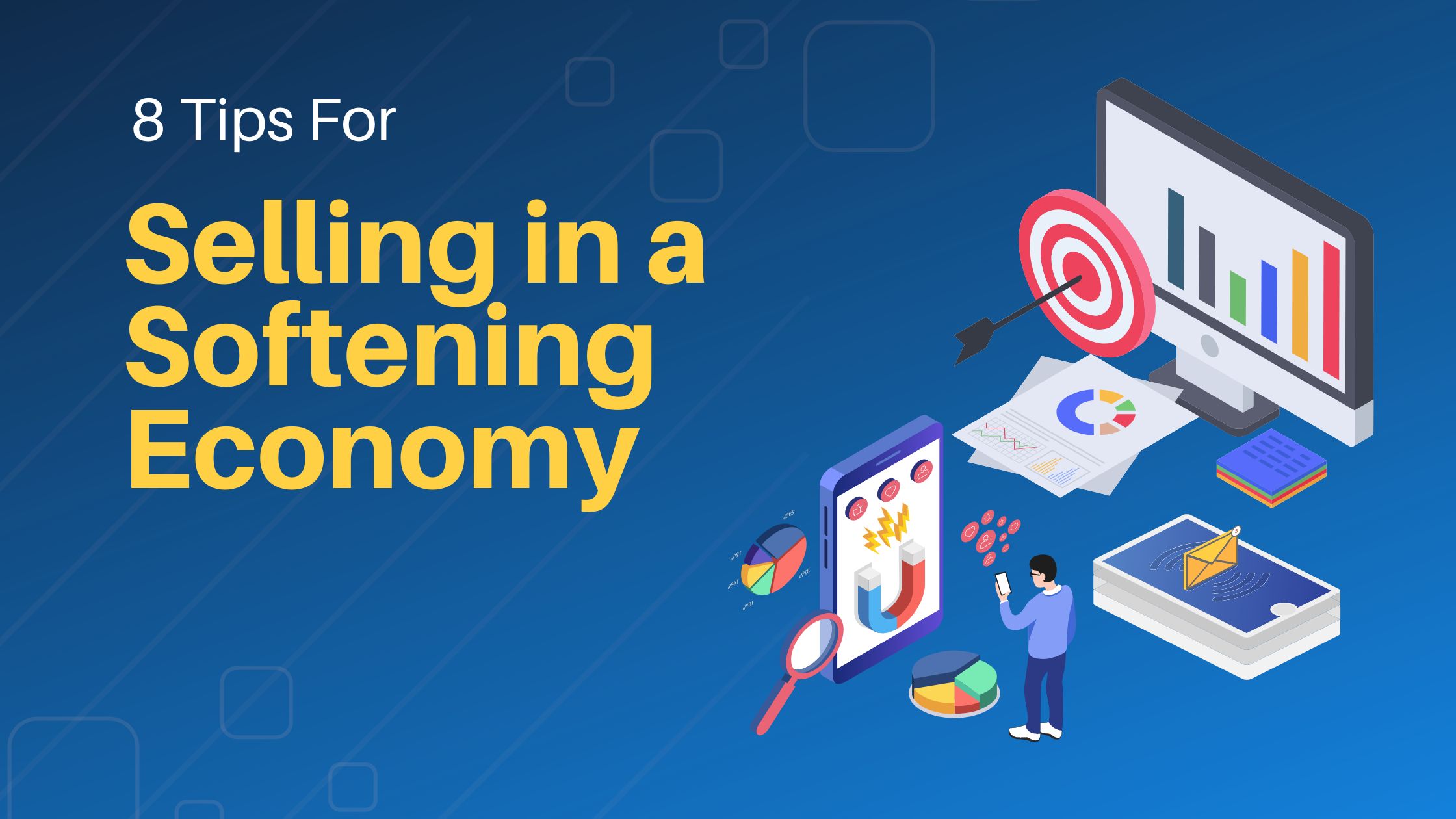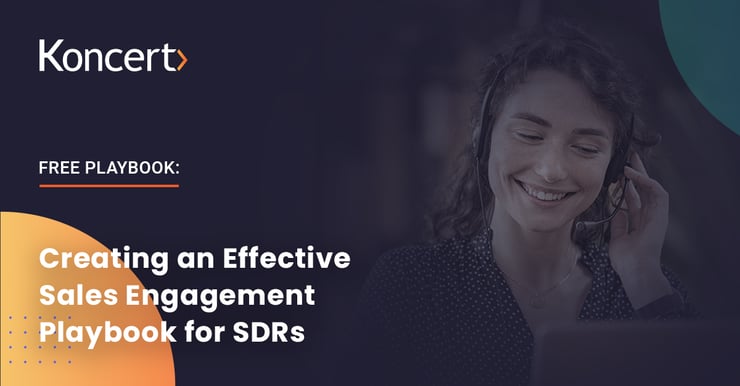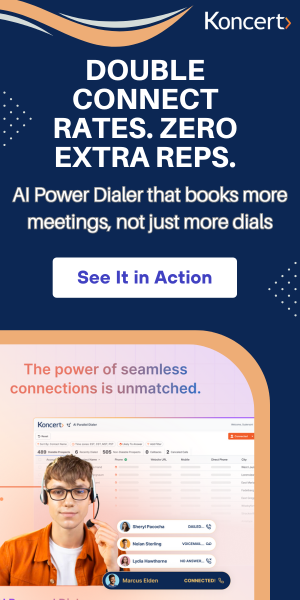11 min read
8 Tips for Selling in a Softening Economy
By: LeeAnn Fleming on Nov 14, 2022 12:15:00 PM

Introduction
Whether or not a recession is officially declared, right now companies are feeling like the economy is on a downward trend. As they are planning their 2023 budgets, leadership teams are looking at Sales to help them weather what’s coming: fewer willing buyers, tighter negotiations for deals, less available dollars for customer spending.
Sales departments are crucial to keeping the businesses healthy, and their challenges are jumping. Happily, technology specifically designed to help B2B sales teams increase their efficiency, improve their performance AND help them stay motivated and enthusiastic about their work is not only available, it’s affordable and proven to work.
Here are eight tips to help improve B2B sales performance during an economic downturn:
1. Broaden Your Customer Base & Sell to More Businesses
It’s fairly simple math: the more potential customers you can reach, the more potential business you can do. Many B2B companies sell into niche or smaller markets. Does this describe your business? How can you broaden your product’s appeal to increase your Total Addressable Market? Are there tweaks you can make, for instance, to your software product that will make it attractive to more industries/job roles than you’ve targeted in the past?
More customer outreach means more opportunities for sales
If your sales team has been reaching 100 prospects per week, with an average of 3-5 meetings per week out of that effort, then doubling – or quadrupling – that is necessary when sales closing is tougher in a down economy. We’re not recommending hiring a bunch of new salespeople and then biting your nails on how to reach personnel cost goals while they get up to speed.
Instead, utilize technology such as a power dialer with a cadence solution that syncs with your CRM. If your sales team is already using Salesforce, for instance, they can use a dialer like Koncert’s AI Parallel Dialer (which comes with Cadence) and reach hundreds more prospects a week per sales rep. And, all of the time they previously spent manually updating records in Salesforce is taken care of with a bi-directional sync of data on call disposition, with Cadence setting up automated next steps such as customizable emails, next call, downloadable materials sent, etc.
2. Follow Up with Your Best Customers
You already have a positive relationship with them. Follow up with them. Remind them that you are there to help them continue to improve their business after they have spent money on your product or service. Let them know about new updates and features or benefits that they may not already be using. Leverage your Customer Success team, and make sure your Customer Support is top-notch. Keep their trust.
In a soft economy, buyers will put more trust in past or current vendors they are familiar with already, rather than jumping to a new one. If they do look elsewhere, referrals and positive reviews matter more in the decision-making process. If you are offering something your prospects see as new, the Social Proof of peers recommending your business is golden. Of course, you have to proactively ask them for those reviews and testimonials. So make those current customers love you, and ask while you’re checking in with them to make sure all is well.
3. Go After Your Lost Customers
Most B2B companies that have been in business a while have hundreds, if not thousands, of contacts in their CRM that are ignored because they were lost opportunities or past customers who moved on from you. Now is the time to reach back to them. They may not have bought before because the timing wasn’t right, or they didn’t have budget for you then. Or, they may have picked a competitor and today they are just a little unsatisfied and ready to look for something better.
Load up those previously-forgotten contacts into a power dialer session with a cadenced campaign designed to move them to reconsider you. These are built-in, first-party leads you already have at your fingertips.
4. Reach Out to Your Competitors’ Customers
These are people who already understand your value proposition but might not know how much better your solution is for their problem. Perhaps you have a larger feature set than the competitor. Perhaps you could be a better partner for them in the long run.
Be careful with these communications – no bad-mouthing, please! After all, your prospect should be complimented for recognizing that they needed something close to what you offer. It’s just that your solution provides more.
Let those competitor customers know that you have their back if they would like to see how much more efficient your product could be for them.
5. Refine Your Go-To-Market Message
What do your prospects need to hear about your product? According to Joe Galvin at Inc. magazine, past experience with downturns has shown that key phrases about improving their market share or increasing their revenue stream are not as successful as messaging about improved efficiency and better team function. In a recession, not everyone will believe that you’ve got a magic bullet. But they will grab onto a solution that will help them get through a tough economic cycle and get to the other side better positioned for growth.
Remember, it’s not ever about you and your needs. It’s about your customer’s needs. You’re there to help them succeed during the downturn that they are experiencing. Your goals are their goals.
6. Consider Your Sales Process and Coach Up Your Team
Many companies haven’t actually thought through their sales team processes. Now is the time.
- Is your sales team ready to deal with more rejections, more objections, and more negotiation? In communicating with prospects, are they brimming with enthusiasm or sounding robotic? Are they using a Cadence to be sure that every communication is followed up in a positive and timely manner? Many teams are working remotely now. Use Remote Coach® technology to listen in on calls and coach individuals while they are communicating with customers. Encourage them to listen to recordings of their own calls. Spend time practicing with them on cold calling techniques, negotiating techniques, and how to ask for referrals.
- Does your company employ ABM (account-based management) processes to target specific prospect companies within industries? Do your sales professionals know how to do this? There are myriad webinars and training programs online about this technique, now.
- How is your team organized? Do you use SDR/BDR individuals who are coordinating with assigned Account Reps to funnel prospects through in the most efficient way? Do you rely on full-cycle sales professionals for outreach from cold calls through close? Depending on your business model, either one can work. It’s worth spending some time determining your own best practices.
7. Motivation Matters – Foster Positivity in your Sales Team
Be cognizant of the emotional health of your sales team, however, it is configured. Sales professionals have a lot of pressure on and working in a difficult economic period increases that pressure. Make sure your team is supported by giving them the training, positive reinforcement, and peer encouragement they need. Sure, there’s competition in sales, and good reporting from sales enablement software allows your leadership and team individuals to see exactly how they measure against each other. But one great way to use that reporting is to have the top producers help coach their peers. If their cold-call conversations are longer and more productive, have a session in which the whole team sees this and discusses how its done.
Encourage your team to take the breaks they need and spend their time with selling – not spending hours of time filling out forms, trying to remember specific details of calls when they type it up hours later, or searching through the CRM data to try to find phone numbers. Use technology to take away those frustrating manual chores and provide them with cadences and dialers that sync with the CRM immediately so nothing is lost even as the salesperson moves on to the next contact, and the next. They’ll be happy to be skipping the tedious part of the job while sales leaders have access to better, more accurate data. Thus, improved happiness on the job for everybody.
8. Invest in Your Sales Technology Stack
Too many B2B companies are pointing to their CRM and telling their sales teams: “there you go.” But a CRM can only do so much, and it’s only as good as the data put in. Salespeople are not generally very good at the data input.
There are many technologies today that are designed with this in mind. Koncert, for instance, fully integrates with other software in your tech stack to improve efficiency and reduce non-selling activities. Koncert has a native integration with Salesforce so that, after downloading the dialer and cadence apps, the salesperson never needs to leave the Salesforce screen – Koncert is a tab within the CRM, helping sales enablement in massive ways. Koncert is available through the Salesforce App Exchange and also on the HubSpot Marketplace. Check it out with a demo, and experience a free trial period for qualified B2B customers.
Related Posts
10 min read
High-Quality Outreach - Why Koncert's ZigZag Dialing® Replaces Call Blasting
Dec 12, 2025 by Koncert Marketing
13 min read
7 Outbound Sales Trends for 2026 - AI, Latency, & Max Connect
Dec 4, 2025 by Koncert Marketing




